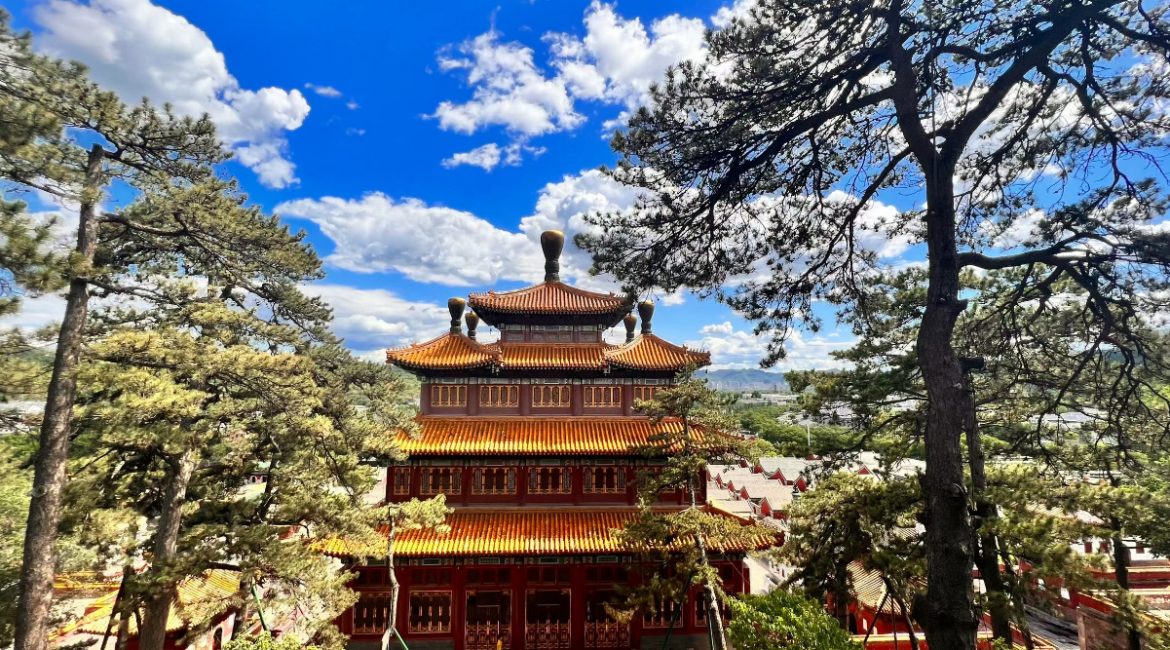Chengde’s Puning Temple is easily the most important of all the Eight Outer Temples in the Mountain Resort (bishu shanzhuan). Rehe’s vast Resort, built between 1703 and 1792, covers 611.2 hectares and is the largest imperial park in China. It also contains some of the most important temples in northern China, many of them having been built by the Qianlong Emperor (1711–99).
The Gelug-administered Puning Temple contains the sole active sangha among the Eight Outer Temples. Historically, it served as the base of administering the Tibetan and Mongolian nobility that gathered at Chengde to reaffirm their allegiance to the Qing, while also worshipping their tantric divinities—divinities that the Qing would end up worshipping as well.
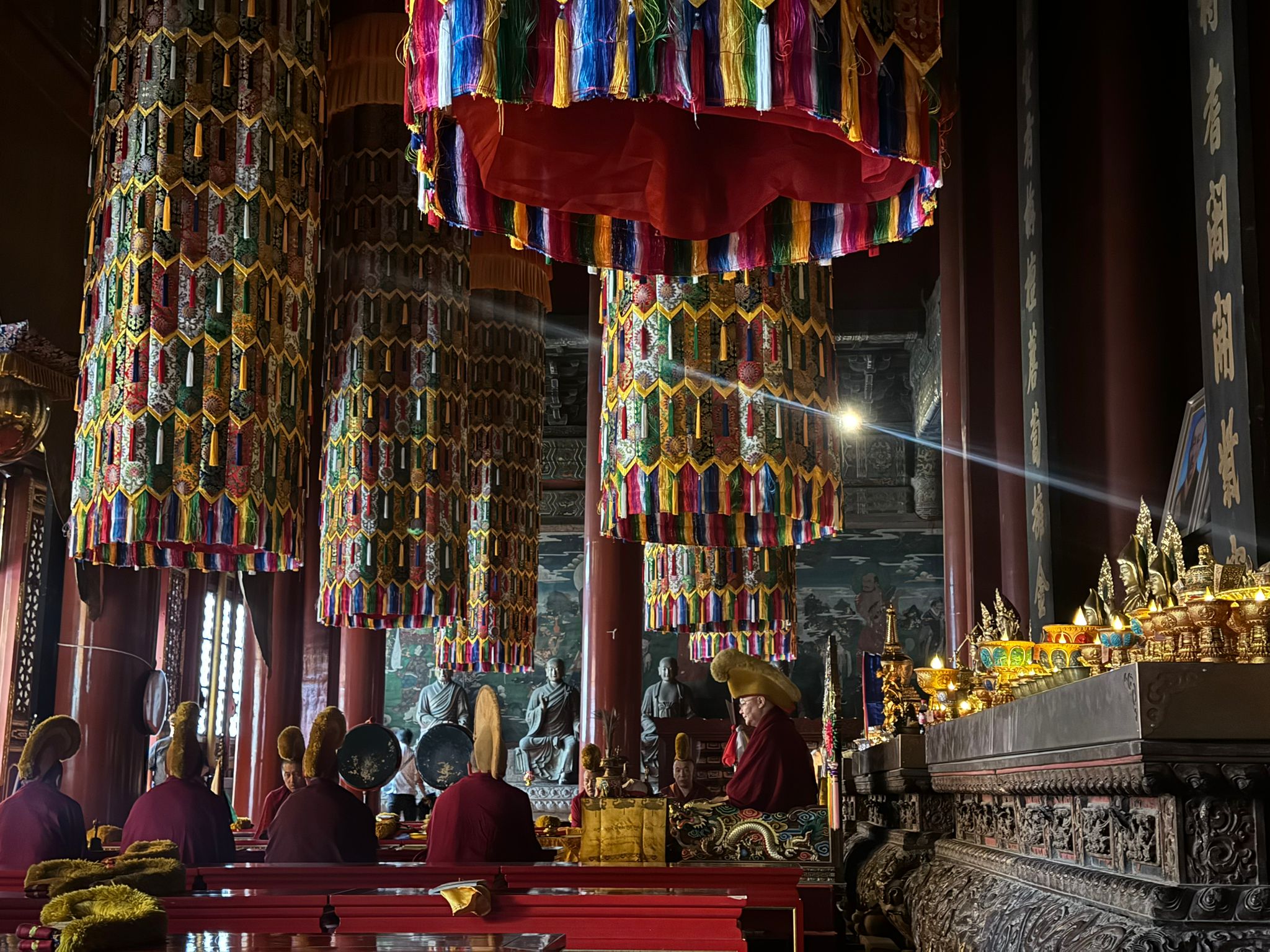
It would seem that the last of the “High Qing” monarchs (along with his grandfather Kangxi and father Yongzheng) is enjoying a resurgence in popularity. The Qianlong Emperor has been a focal figure of study by both Chinese and Western scholars in Sinology, particularly in New Qing Studies. Whatever his faults, the Qianlong Emperor also had undeniably good qualities. This was the emperor that bequeathed to the Chinese nation its largest territorial extent. He correctly identified the frontiers, the peripheries (both spatially and psychologically), as the regions that required a sophisticated playbook of unification and pacification. He fused his Manchurian notion of “multiple emperorships” with the Chinese notion of universal tianxia.
Like many of the Qianlong Emperor’s constructions at the Mountain Resort, Puning Temple was a deliberate imitation of places elsewhere. For example, the Putuo Zongsheng Temple and the Xumi Fushou Temple (see my previous post) reproduced the significance and function of the Potala Palace in Lhasa and Tashilhunpo Monastery in Shigatse, uniting the Dalai Lama and Panchen Lama institutions and therefore Tibet under China. This not only helped to show off his devotion, but also shifted the religious center of his Mongolian subjects and the Mongol nobles from Tibet to Rehe.
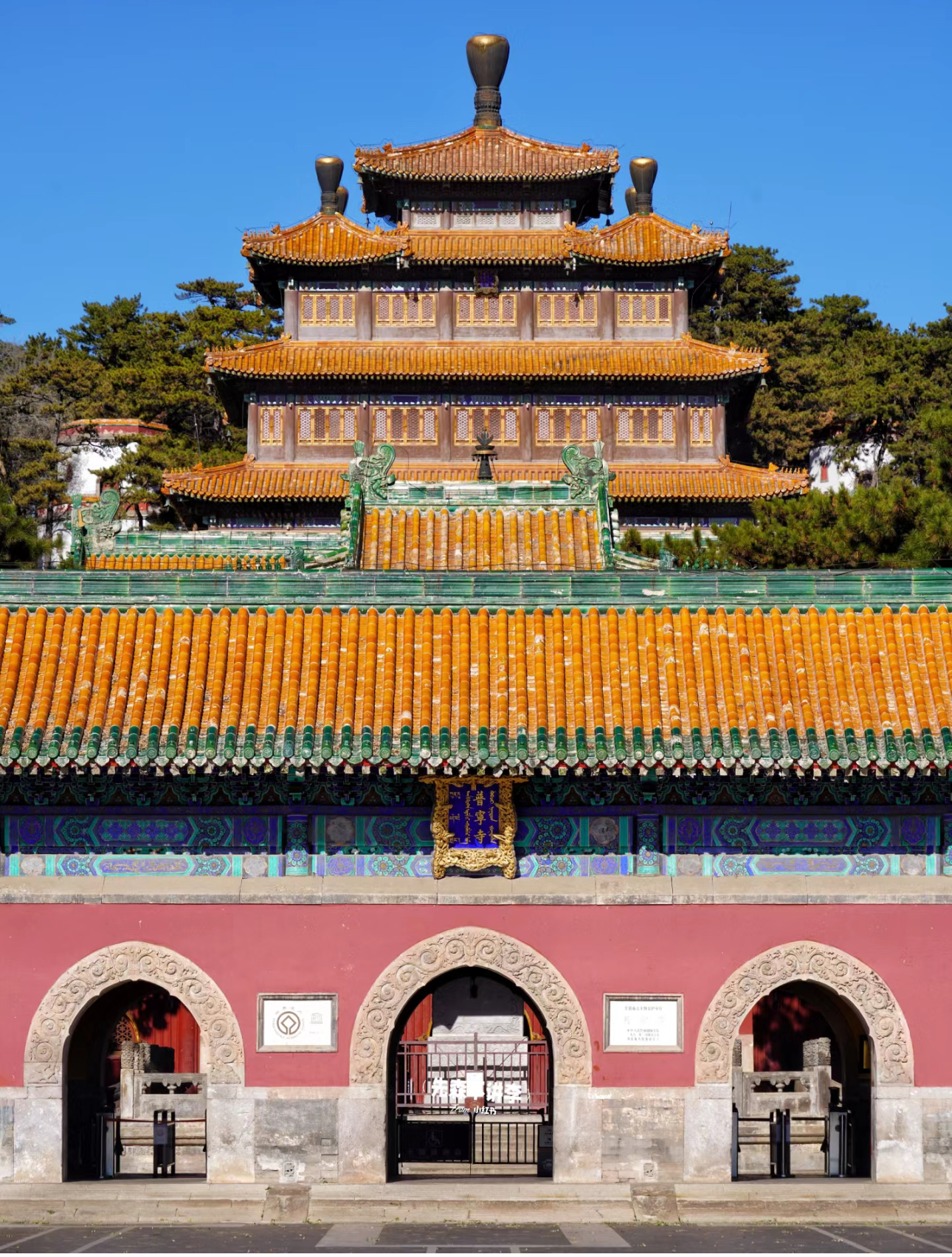
And Puning Temple, which was built to celebrate the Qing triumph over the Jungars, was modelled after Samye Monastery: the first monastery in Tibet, which moved into motion the Wheel of Dharma on the Tibet-Qinghai Plateau.
In recent years, Puning Temple has become perhaps the most important temple of them all, no doubt due to a much-publicized visit by Chinese president Xi Jinping on 24 August 2021. To this day, the Gelug temple’s monastic community is comprised mostly of Tibetans and Mongolians. During my visit to the temple and a meeting with its abbot in September, several screens prominently displayed a slideshow of Mr. Xi’s visit.
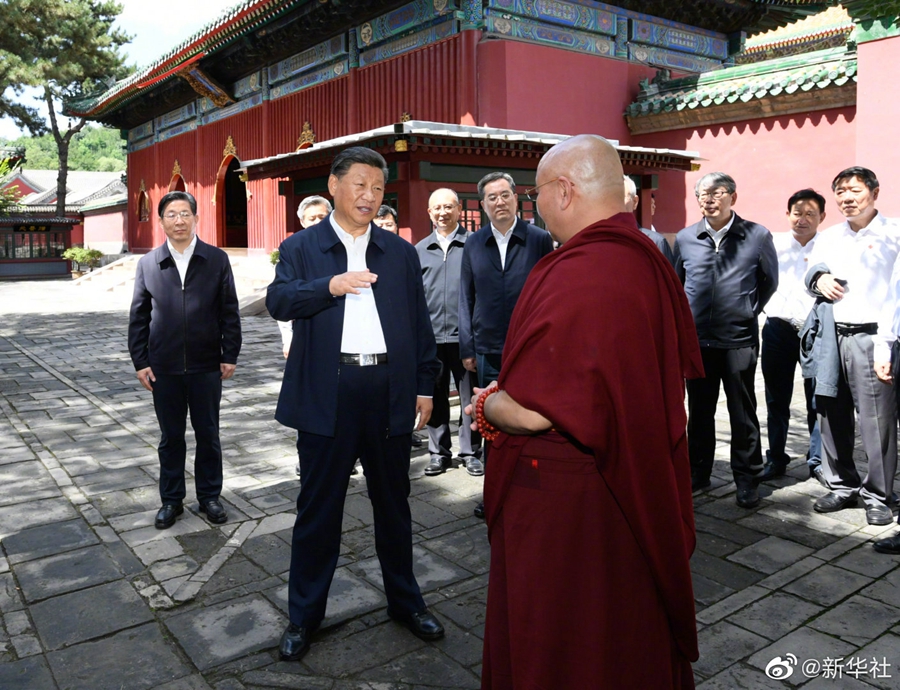
The Qianlong Emperor was a prolific commissioner of Buddhist temples, and Mr. Xi has been a keen visitor of temples across China, from Tang-era structures to Qing-period institutions that continue to have contemporary relevance in China in our time. Puning temple was not the first Buddhist sacred site he visited, and in fact his fascination with said sites (as well as Buddhist martial arts) has manifested in a tendency to visit Buddhist temples. The visits often telegraph a policy that reflects a deep, personal conviction.
From 2002 to 2007 while serving as a cadre in Hangzhou, Zhejiang, he was a frequent visitor to Jingshan temple, praying for good fortune before his ascension to China’s top echelons of government in the 2010s. In 2015, he welcomed Indian PM Narendra Modi at the Big Wild Goose Pagoda in Xi’an, a symbol of the prosperous and culturally vibrant Silk Road of bygone times, in an attempt to seal India’s partnership in China’s Belt and Road Initiative (BRI). And his most recent visit to Hongjue Temple in June was a statement of support for the Gelugpa within Tibet and Qinghai.
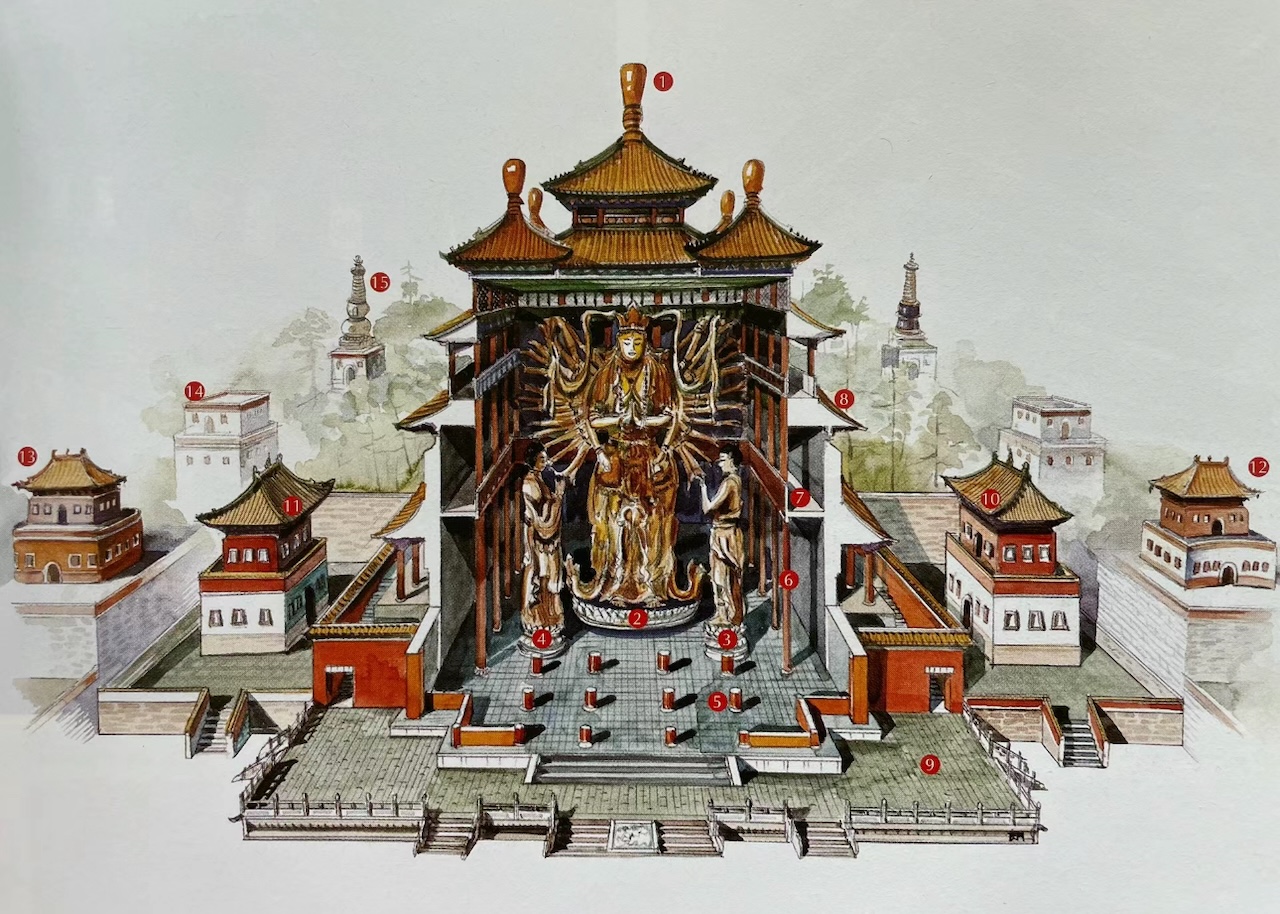
What was once Qing Inner Asia, of course, is now completely different from when Qianlong administered it. What has not changed is the resident inside the main structure of the Mahayana Hall: a colossal, 22-meter-high image of Thousand-Armed Avalokiteshvara, or Guanyin, which holds the record for the largest wooden sculpture of a Buddhist divinity in China. An esoteric deity, the Thousand-Armed Guanyin has no limits to her reach, stretching her compassionate and saving hands across the universe, transcending all barriers and frontiers.
Notions of Buddhist leadership from the Vajrayana tradition invariably shaped Qing statecraft. Avalokiteshvara’s presence at Puning Temple inspires the aspirations of Buddhist philanthropy and social services, as well as hinting how Buddhist universalism might inform today’s modern China.
“Belief is the source of true efficacy.”
Related blog posts from BDG
The Sino-Tibetan Legacy of Unity at Xumi Fushou Temple, Chengde
President Xi’s visit to Hongjue Temple was for American and Gelug eyes


